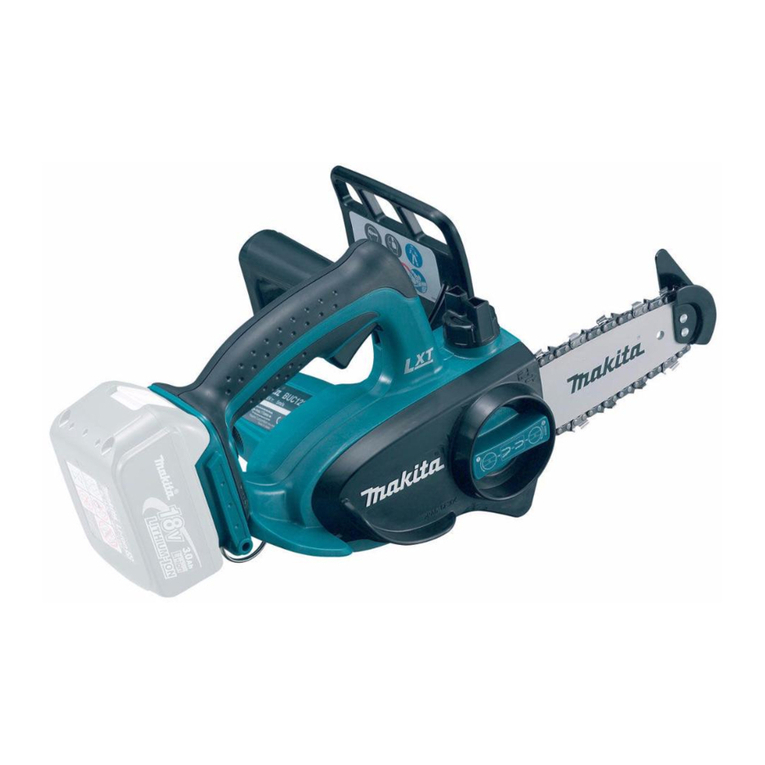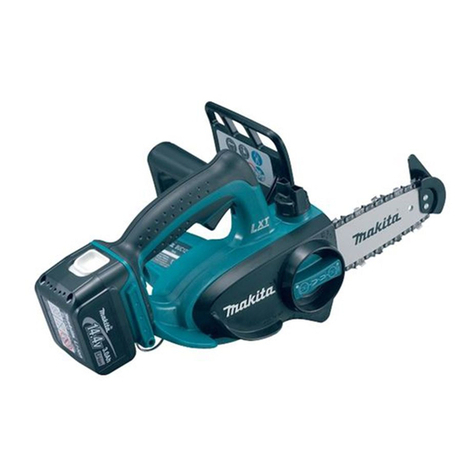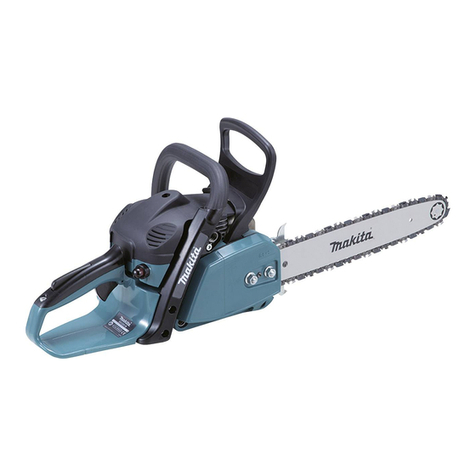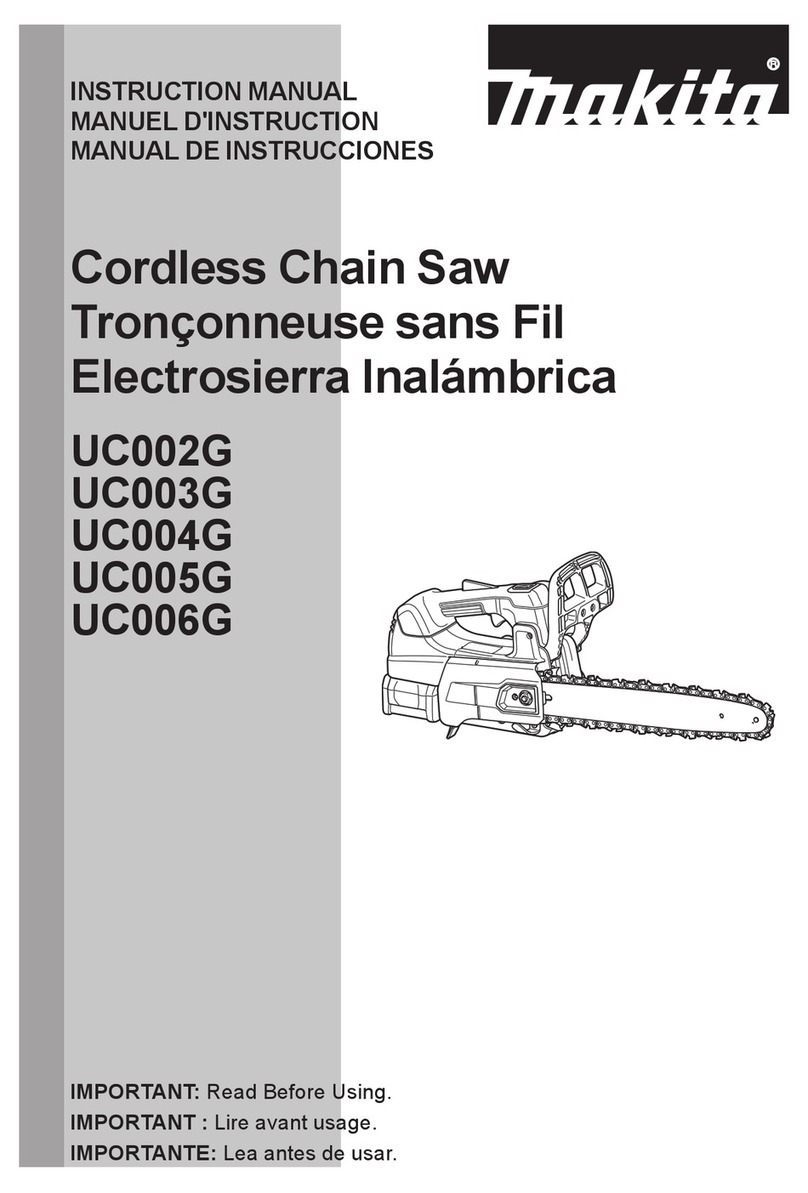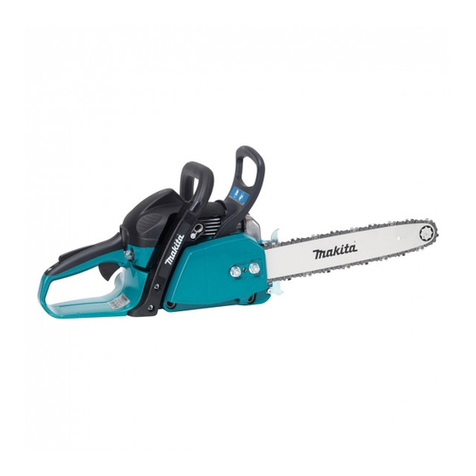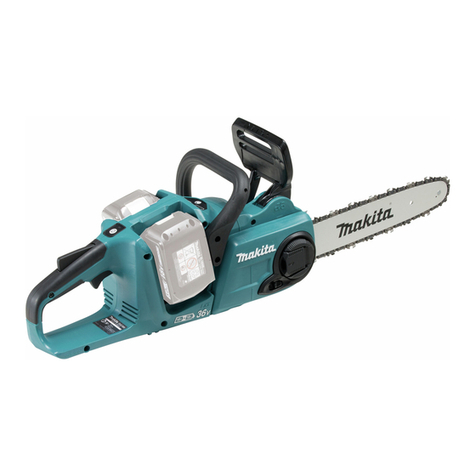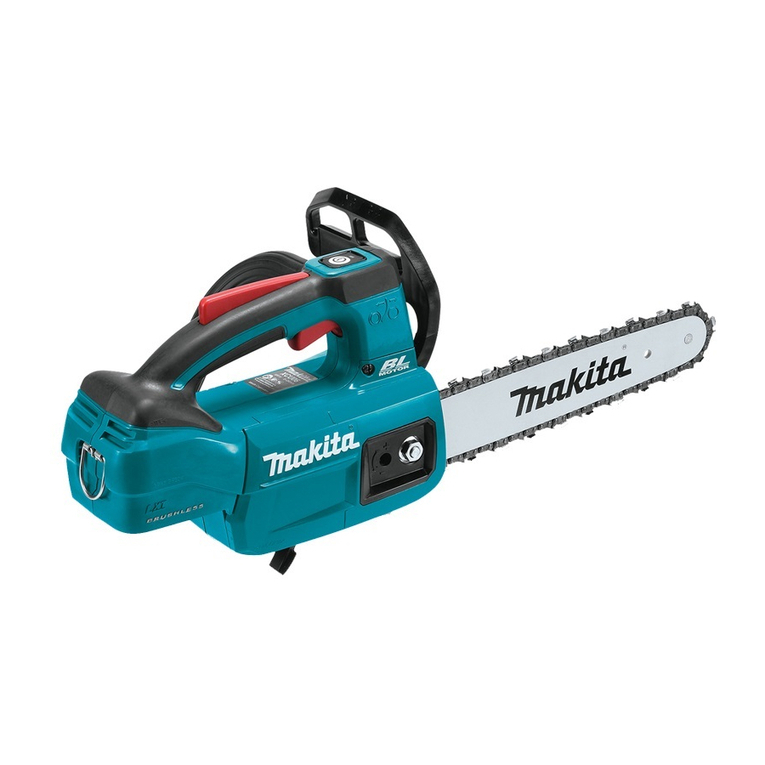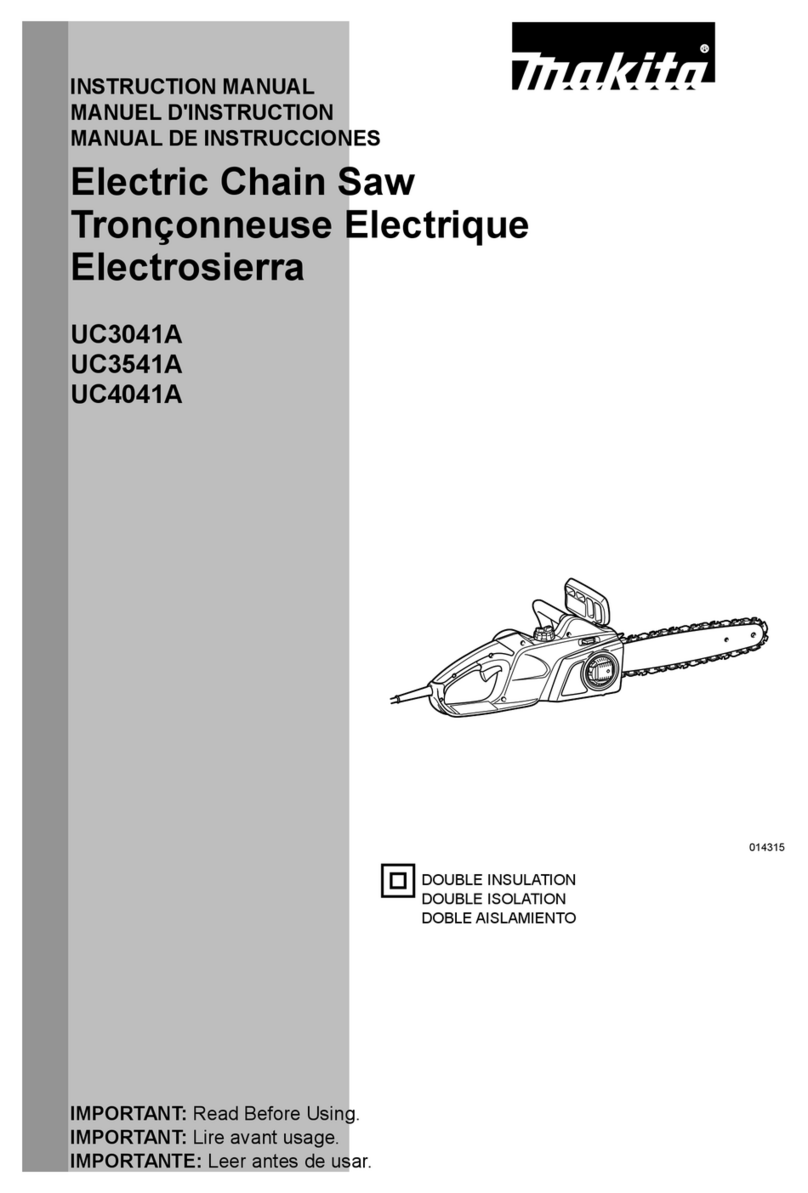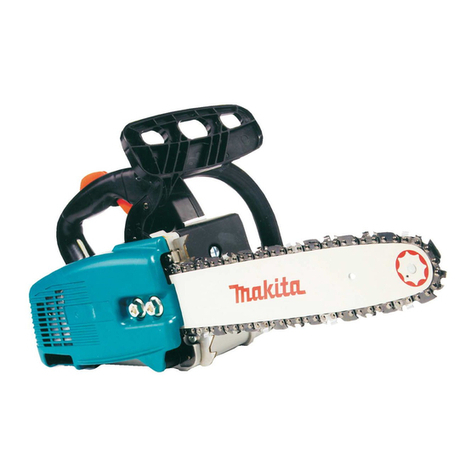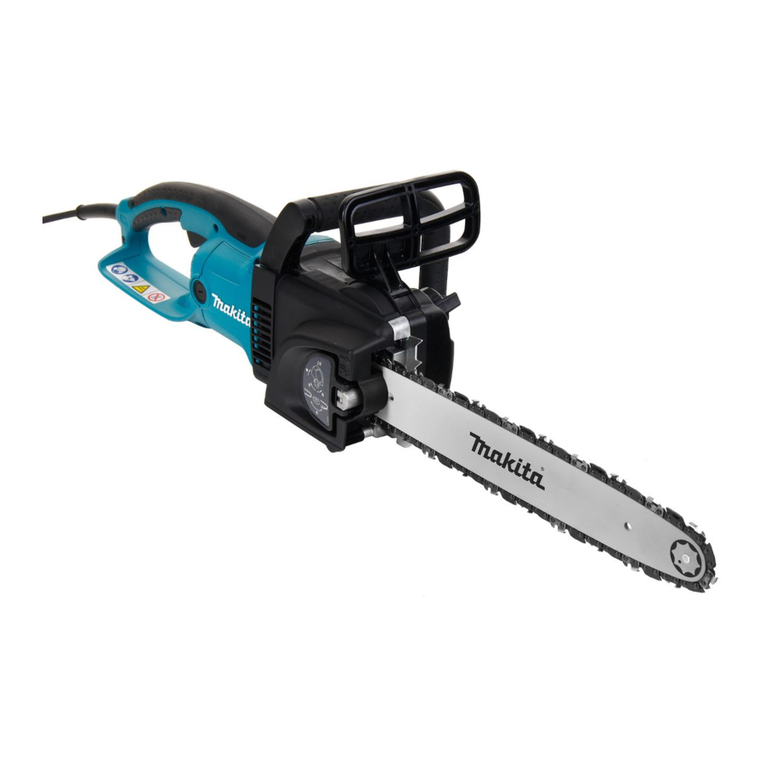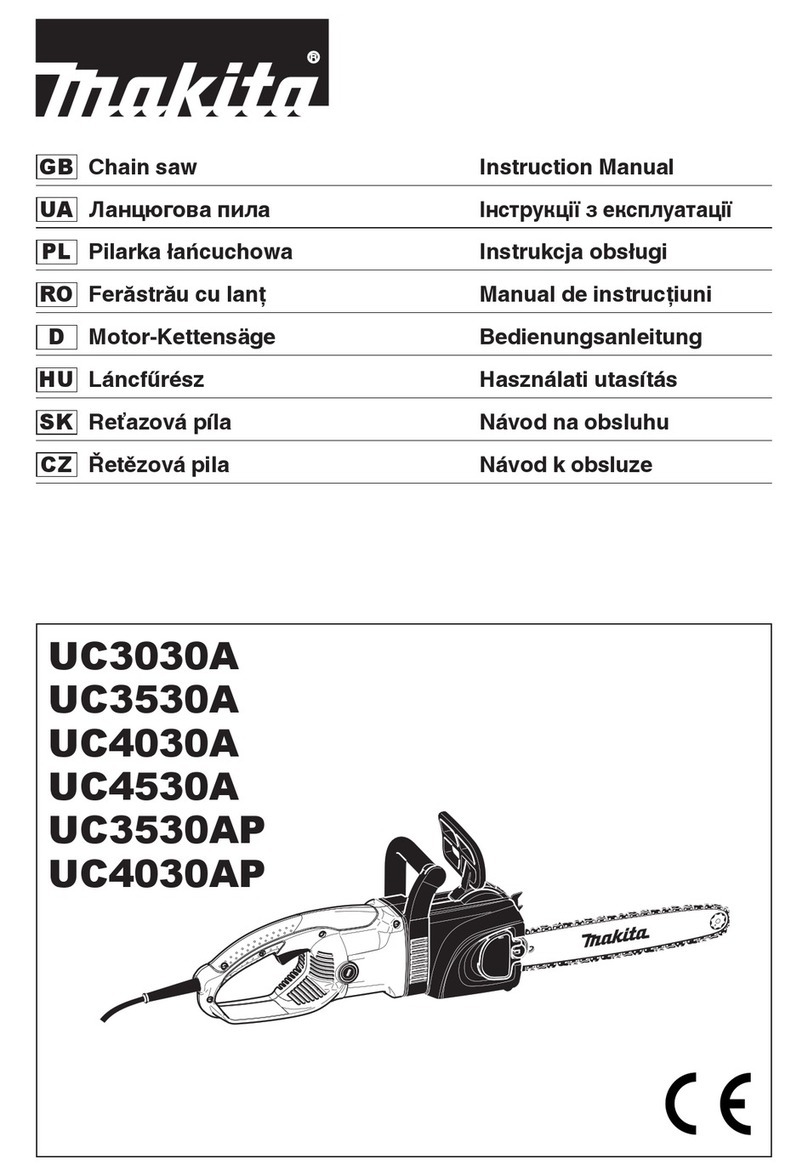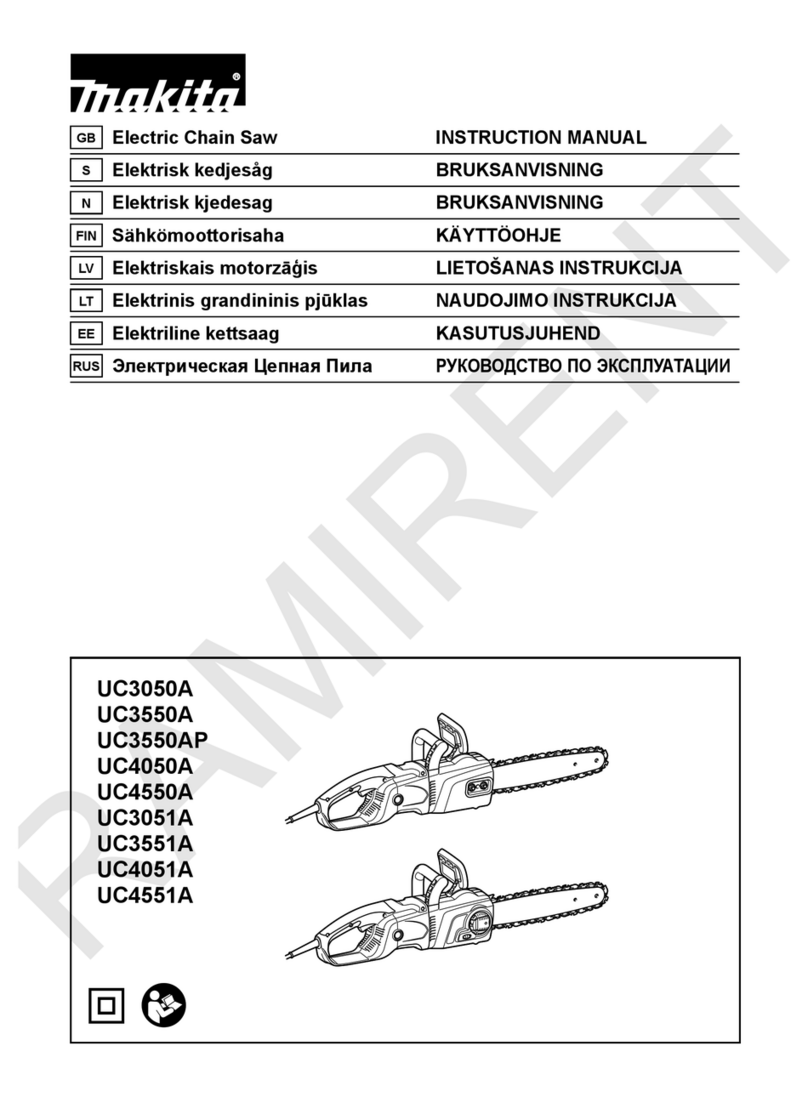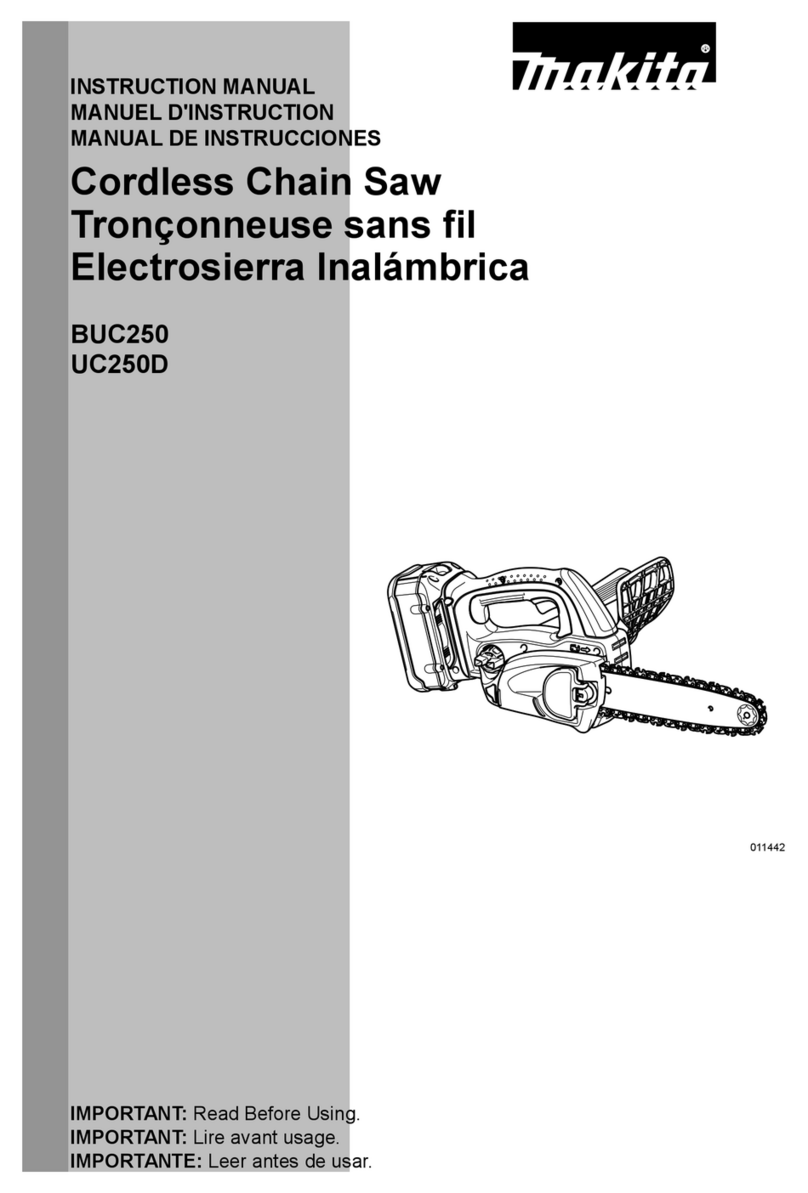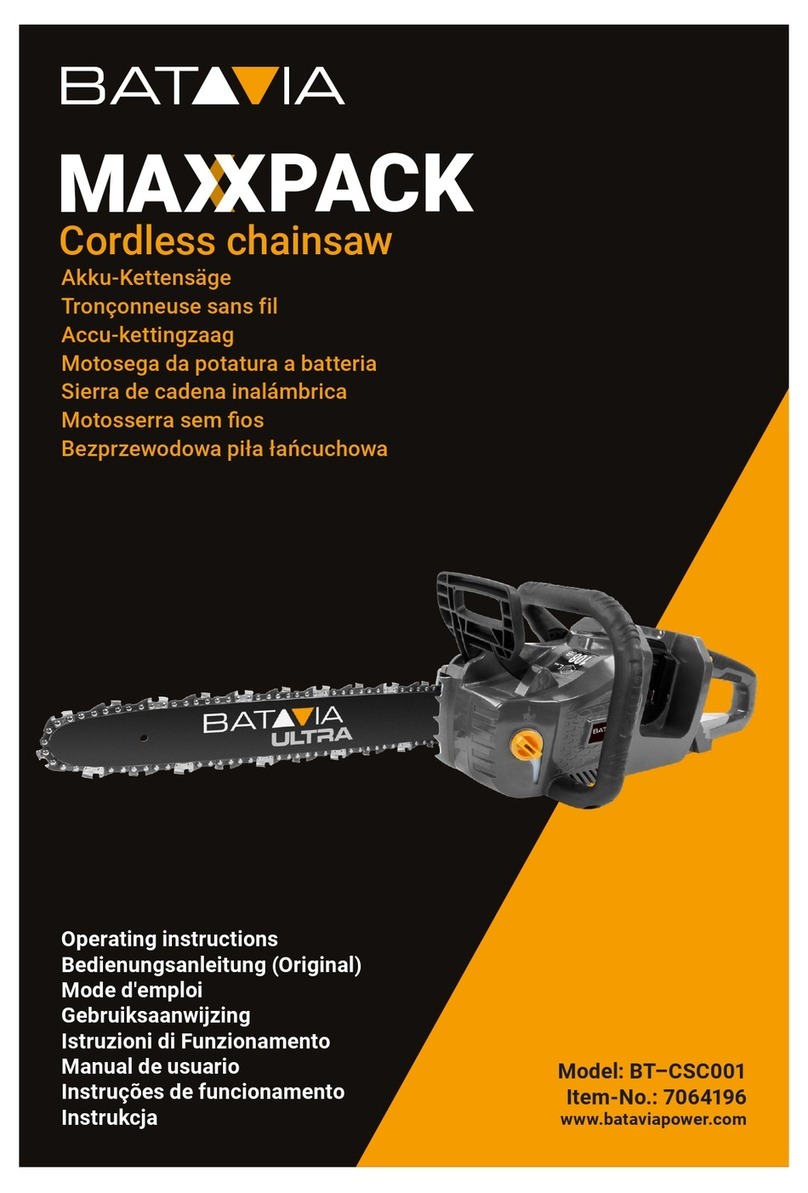6
Safetyprecautionsforchainsawoperators
While operating the chain saw please observe the
following rules:
a) Contactoftheguidebarnosewithanyobject
shouldbeavoided.
b) Tipcontactmaycausetheguidebartomove
suddenlyupwardandbackward,whichmaycause
seriousorfatalinjury.
c)Alwaysoperatethechainsawwithbothhands.
WARNING!
Readandfollowall safety precautionsinthe owner’s
manual. Failure to follow instructions could result in
seriousinjury.Itisrecommendedtolendthechain
saw only to people who are experienced in working
withchainsaws.AlwayshandovertheOwner’sand
Safety Manual.
WARNING!
This chain saw is capable of severe kickback
thatcouldresultinseriousinjurytotheoperator.
Do not operate this chain saw unless you have
extraordinary cutting needs and experience in and
special training for dealing with kickback. Chain
sawswithsignificantlyreducedkickbackpotential
areavailable.
WARNING!
Kickbackmayoccurwhenthenoseortipoftheguide
bartouchesanobject,orwhenthewoodclosesin
and pinches the saw chain in the cut. This contact
mayabruptlystopthesawchainand in some cases
may cause a lightning fast reverse reaction,kicking
theguidebarupandbacktowardstheuser,orpush
theguidebarbacktowardstheoperator.Kickback
may cause you to lose control of the saw.
As a chain saw user, you can take several steps to
reducetheriskofakickbackandpotentialinjury.
A. Withabasicunderstandingofkickback,youcan
reduceoreliminatetheelementof surprise. Itisa
suddensurprisethatcontributestoaccidents.
B. Keep a good firm grip on the saw with both
hands, your right hand on the rear grip and
yourlefthandonthetubularhandle,whenthe
engineisrunning.Useafirmgripwiththumbs
andfingersencirclingthechainsawhandles.A
firmgripcanneutralizekickbackandhelpyou
maintain control of the saw. Don’t let go!
C. Make sure that the area in which you are cutting
isfreefromobstructions.Donotletthenoseof
theguidebarcontactthelog,branch,orany
otherobstructionswhichcouldbehitwhileyou
are operating the saw.
D. Do not overreach or cut above shoulder
height.
E. Followmanufacturer’ssharpeningand main
tenance instructions for the saw chain.
F. Onlyusereplacementbarsandchainsspecified
bythemanufacturerortheequivalent.
Additionalsafetyprecautions
Thefollowingadditionalsafetyprecautionsmustbe
observedbyallusersofchainsaws:
1. Do not operate a chain saw when you are fatigued.
2. Usesafetyfootwear;snugfittingclothing;
protective gloves; and eye, hearing, and head
protection devices.
3. Use caution when handling fuel. Move the chain
saw at least 10 feet (3 m) from the fueling point
beforestartingtheengine.
4. Donotallowotherpersonstobenearthechain
saw when starting or cutting with the chain saw.
Keepbystandersandanimalsoutofthework
area.
5. Do not start cutting until you have a clear work
area, secure footing, and a planned retreat path
from the falling tree.
6. Keepallpartsofyourbodyawayfromthesaw
chain when the engine is running.
7. Before you start the engine, make sure that the
saw chain is not contacting anything.
8. Carry the chain saw with the engine stopped,
theguidebarandsawchaintotherear,andthe
mufflerawayfromyourbody.
9. Do not operate a chain saw that is damaged, is
improperlyadjusted,orisnotcompletelyand
securelyassembled.Besurethatthesawchain
stops moving when the throttle control trigger is
released.
10. Shutofftheenginebeforesettingitdown.
11. Useextremecautionwhencuttingsmallsize
brushandsaplingsbecauseslendermaterial
maycatchthesawchainandbewhippedtoward
youorpullyouoffbalance.
12.Whencuttingalimbthatisundertensionbealert
forspringbacksothatyouwillnotbestruckwhen
thetensiononthewoodfibersisreleased.
13. Keep the handles dry, clean, and free of oil or fuel
mixture.
14.Operatethechainsawonlyinwellventilated
areas.
15. Do not operate a chain saw in a tree unless you
havebeenspecificallytrainedtodoso.
16.Allchainsawservice,otherthantheitemslisted
in the owner’s manual maintenance instructions,
shouldbeperformedbyMAKITA.(Forexample,if
impropertoolsareusedtoremovetheflywheelor
ifanimpropertoolisusedtoholdtheflywheelin
order to remove the clutch structural damage to
theflywheelcouldoccurandcouldsubsequently
causetheflywheeltoburst.)
17. When transporting your chain saw, use the chain
protection cover.
18. Lowkickbackbarsandlowkickbackchainsare
designedtoreducetheriskofkickbackinjury.
AskyourMAKITAdealeraboutthesedevices.
